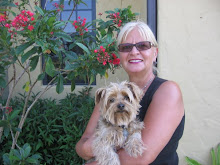The diamond business is most complicated and perfection is the pre-established standard worldwide. The measurement and evaluation are extremely thorough for these the hardest stones in the world; only a diamond can scratch another diamond. If you are still reading, then you must be interested.
For this pinnacle of luxury, perfection is evaluated by the four “C’s”: CARAT, CLARITY, COLOR, and CUT. In the North-West Territories, another C is added to the list of standards of excellence, it is C for CANADIAN. The price is set according to the perfection of precious gemstone. Let me explain:

CARAT: a carat is divided into a hundred points. The more points a diamond has, the higher the price is. If it weighs a carat, its value surpasses $2500. A five carat diamond equals one gram. In 2006, Diavik Mine, located 186 miles North-East of Yellowknife by air, extracted more than 9.8 million carats worth of diamonds.
CLARITY: the more the diamond is pure and flawless, the more its value increases. There is a scale of evaluation to establish the purity of a diamond: the letter D indicates a perfect clarity according to international standards. Type D diamonds are so perfect that even a microscope cannot detect any flaws.
COLOR: the perfect white diamond is pure white. Its whiteness is another determining factor to evaluate the price. Brownish, orange, bluish or pinkish highlights reduce the diamond value. Similar standards apply to the most rare yellow and blue diamonds.
CUT: the angles and facets of a diamond must be cut to very precise standards. This is how the diamond gets a name that every woman is dreaming about: solitaire, princess, cushion, trillion, etc. In short, every diamond gets a different name according to its cut.
CANADIAN: the criterion established by diamond traders of our country to emphasize the general quality of the gemstone. CANADIAN also distinguishes our diamonds from African Blood Diamonds used to support wars and conflicts. Canada’s diamond industry has no skeletons in the closet.

At Yellowknife, Aurora College offers a course in how to cut and polish diamonds. It’s the only place in North America to offer this specialty training. The program lasts 22 weeks. Since 2001, 94 students have graduated and the rate of employment is 50%.
Needless to say I enjoyed my visit at Yellowknife… and I just love diamonds.






No comments:
Post a Comment